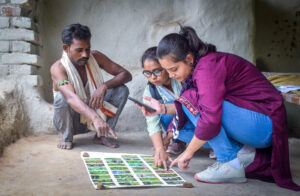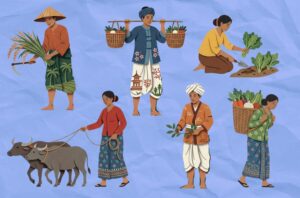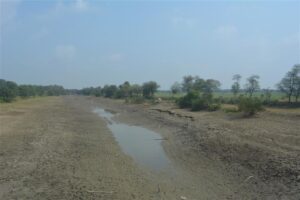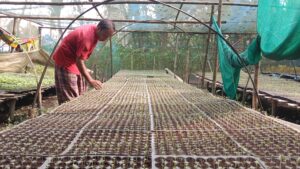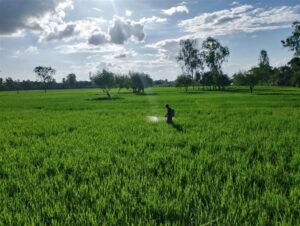by Kazuki Saito and Iris Bugayong
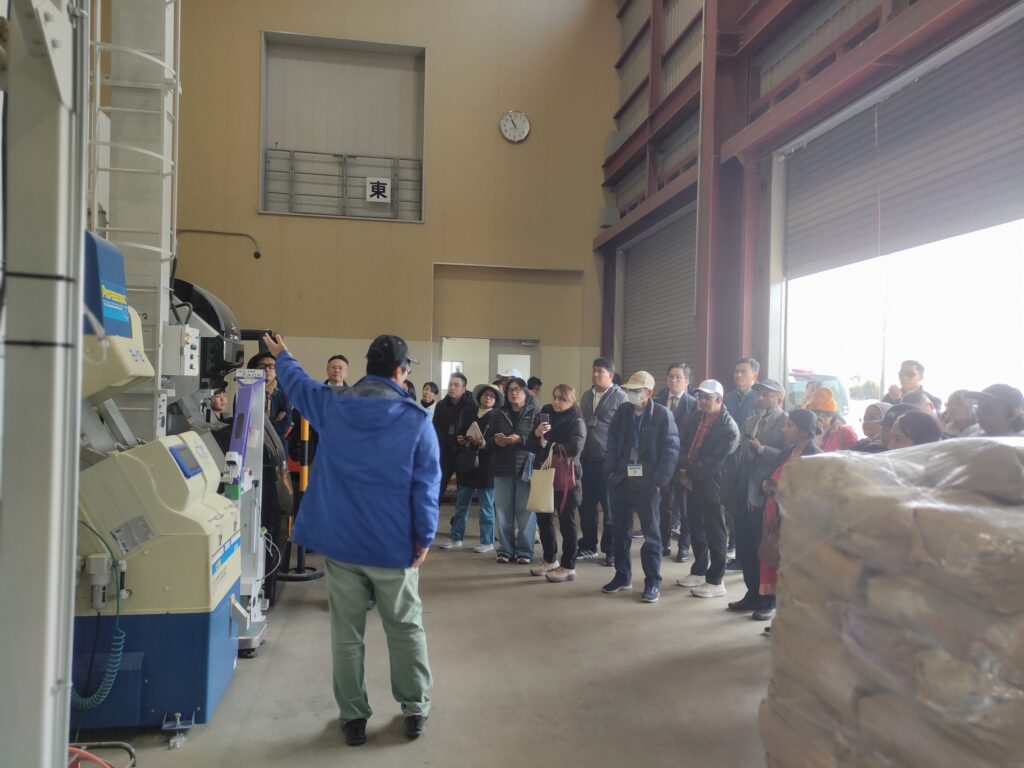
Rice is not just a crop—it is the backbone of economies, cultures, and food security across Asia. In Japan, a recent rice shortage has brought this reality into sharp focus. Prices have spiked, supermarket shelves are being emptied, and public concern is rising. The causes—climate-induced weather disruptions, a surge in tourism-driven demand, and speculative stockpiling. In response to the crisis, the Japanese government has begun auctioning off rice from national reserves. The situation resonates deeply with neighboring ASEAN countries, where rice plays a similarly vital role. It was in this context that policymakers, government officials, and representatives from Micro, Small, and Medium Enterprises (MSMEs) from seven ASEAN Member States gathered in Tokyo from March 17 to 19, 2025, for the ASEAN-Japan Workshop on Carbon Neutrality, Food Security, and Agricultural Innovation.
Organized by the ASEAN-Japan Centre, the International Rice Research Institute (IRRI), and the Southeast Asian Regional Center for Graduate Study and Research in Agriculture, the workshop provided a platform to exchange ideas, share best practices, and promote innovations for building more resilient and sustainable agricultural systems. With agriculture being both a victim of and contributor to climate change, the discussions focused not just on food production but on transforming the region’s food systems to meet the dual challenge of ensuring food security while reducing environmental impact. Traditional rice production significantly contributes to greenhouse gas (GHG) emissions like methane. The flooded rice fields create conditions for methane-producing bacteria, and fertilizer use contributes to GHG emissions.
One of the highlights was a visit to two rice farms in Ibaraki Prefecture, about 80 kilometers from Tokyo. Japan’s agricultural sector is characterized by small farm sizes and an aging farming population, with the average age of farmers at 69 years. However, over the last 15 years, the number of rice farmers in Japan has declined by approximately 50%, while the average rice farm size has increased by around 87% (from 1.0 to 1.8 hectares). As older farmers retire and sell or rent out their land, the majority of available farmland is increasingly acquired by mid-aged and new-generation farmers. The two farmers visited presented a sharp contrast in farm size and approaches to rice production—one operating on a relatively small scale with a focus on natural circular farming, the other managing a larger, more mechanized farm with an emphasis on efficiency and innovation. Despite their differences, both represent important and complementary pathways for the future of farming.

Yokota Farm
Located in Ryugasaki City, the Yokota farm cultivates 177 hectares of land, much of which is either owned or rented from retired farmers or those who have left agriculture for other pursuits. Recognizing that traditional rice cultivation in Japan is often inefficient due to the small scale of operations and sub-optimum use of labor and machinery, Yokota Farm has taken a different approach. Unlike in Southeast Asia, where rice can be grown two to three times a year, Japan typically allows for only one cropping cycle. To improve efficiency, Yokota Farm carefully coordinates its production activities across 177 hectares with a team of ten staff, including family members. While most farms of similar size rely on multiple machines, Yokota Farm optimizes its resources by using just one transplanter and one combine harvester. Rice seedlings are transplanted in a staggered manner over a two-month window from April to June and harvested between early August and early October. This scheduling ensures maximum utilization of machinery and labor, streamlining operations and enhancing overall productivity.
In addition to its streamlined production system, Yokota Farm employs a unique organizational structure. Departing from the traditional top-down, hierarchical model—where decisions are centralized and directives flow from the top—Yokota Farm adopts a decentralized “Amoeba” structure. This model empowers employees with the autonomy to make swift, informed decisions, fostering agility and a stronger sense of ownership across the team.
With the growing challenges of climate change, sustaining and improving rice production has become increasingly difficult for Yokota Farm. In response, the farm has adopted smart farming technologies and data-driven management practices. These innovations have significantly reduced production costs while maximizing profitability. Drones are now used for the precise application of agrochemicals, including fertilizers. Moreover, pesticides and herbicides are applied only when and where necessary.
Most of Yokota Farm’s produce is sold directly to consumers and commercial establishments. Direct marketing plays a crucial role in the farm’s business strategy, helping to build strong relationships with customers and enhance brand value. Yokota Farm hosts an annual rice planting event to further engage the community and promote its products. This popular event not only raises awareness of sustainable farming practices but also strengthens customer loyalty and supports the farm’s marketing efforts.
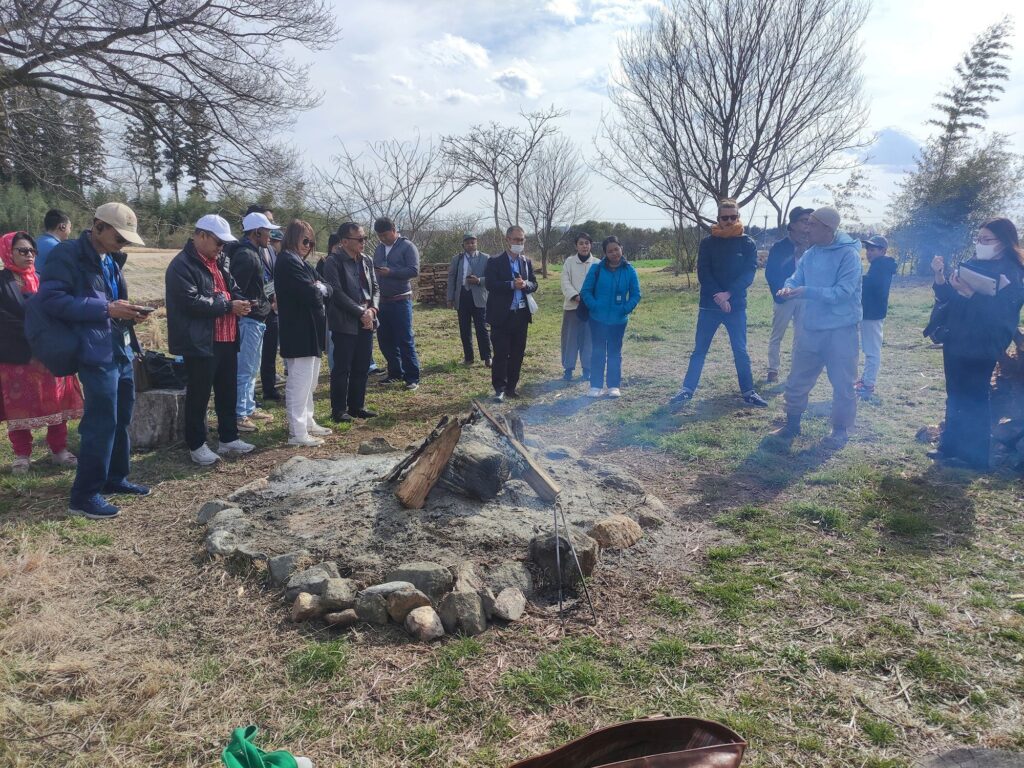
Mizuno Hajimari Farm
After relocating to the mountains after the Great East Japan Earthquake in 2011, Mr. Katsuaki Sakurai, a representative of Mizuno Hajimari Farm, embraced a self-sufficient lifestyle in Southern Japan. This experience heightened his respect for nature and advocacy for sustainable farming practices. He believes the earth’s resources should be managed well to sustain future generations. Eight years later, he returned to Tsukuba City to cultivate his family’s land, adopting a natural circular agriculture approach that completely avoids fertilizers, pesticides, and herbicides. As other farmers abandoned their land, he took on more farm areas, cultivating non-glutinous and glutinous rice, wheat, and soybeans in a total of >4 ha of land.
Through careful quality control and processing in partnership with specialty and local manufacturers, Mizuno Hajimari Farm can sell diverse, high-value products that attract a special market niche. It sells brown rice, while lower-quality rice is processed and sold as gluten-free rice flour, rice crackers, and rice noodles. They also process wheat and soybeans into flour, miso and snacks.
Nestled in Tsukuba City, Mizuno Hajimari Farm can also sell to the farmer’s market. While he envisions scaling their operations to further establish demand for a sustainable community-oriented food production model, Mr. Katsuaki Sakai is not oblivious to the challenges. “Capital and securing customers are the most challenging,” he admits, underscoring a common concern of small-scale farmers accessing competitive markets.
“This visit from colleagues across Asia to my farm has brought a renewed sense of clarity to my mission here. I deeply value the exchange and connection we shared with the community. What stayed with me most is a deep sense of togetherness—a reminder that, beyond our differences, we are united in our journey as fellow caretakers of this Earth,” he said.
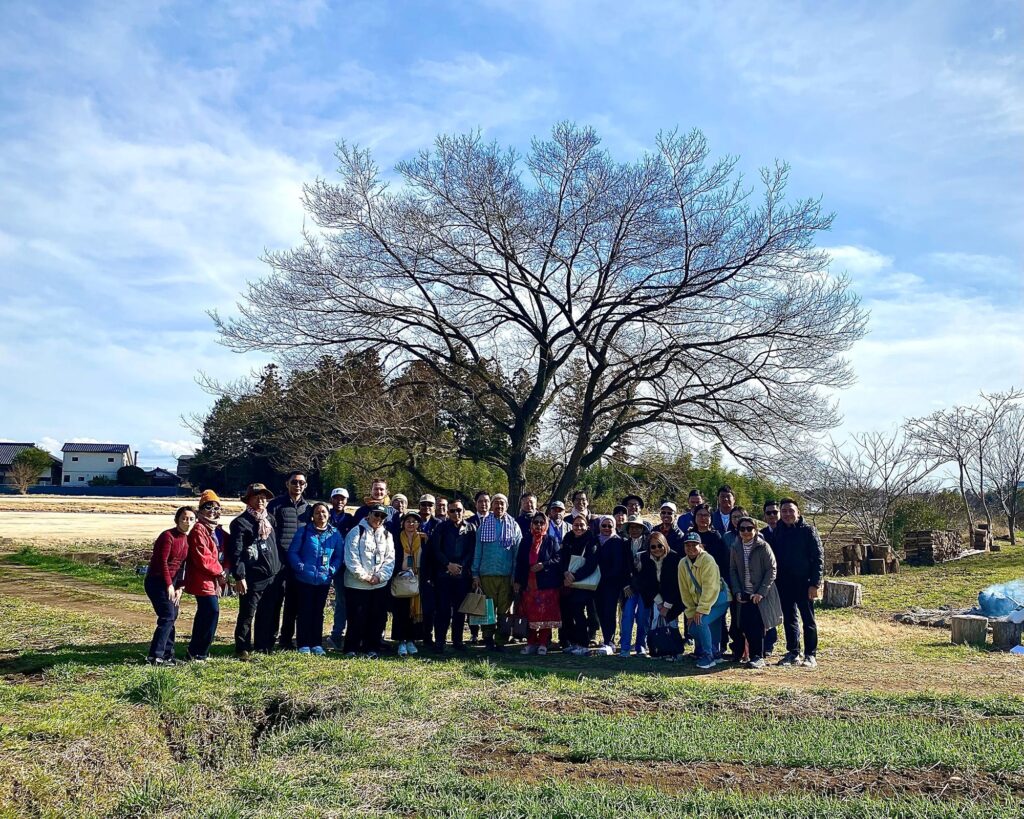
Insights from the different approaches
“The highlight of our visit to Yokota Farm was learning to maximize labor with minimal staff while reaping numerous benefits. One of the most appealing aspects of the farm was its self-reliance, innovative marketing platform, effective use of chicken manure, and the reduction of chemical substances. During our visit to Mizuno Hajimari Farm, we encountered individuals fully dedicated to sustainable farming practices, including one man who made the remarkable transition from a medical doctor to an organic farmer,” said Mr. Bunika San, Director of Agri-Smart Innovation Co., Ltd. in Cambodia. Agri-Smart Innovation is among the MSME participants of the workshop.
Yokota Farm and Mizuno Hajimari Farm differ in scale, farm management practices, and market strategies. Yokota Farm emphasizes efficiency and modern agricultural techniques, while Mizuno Hajimari Farm follows a natural farming approach. Despite these differences, both farms share a strong commitment to sustainable agriculture, the expansion of their agribusinesses, and building robust market linkages. They also highlight the crucial role of field observations and monitoring and data analytics in decision-making. Moreover, the entrepreneurial mindset and experimental orientation have been key to their success.
As the aging of farmers becomes a shared challenge across many Asian countries, the recent changes observed in Japan’s rice farming sector offer valuable lessons. By examining how Japanese farmers adapt through innovation, entrepreneurship, and new models of farm management, other countries in Asia can gain insights for revitalizing their own rice farming systems and preparing for a more sustainable future.
Working across multiple ASEAN Member States, IRRI continues to play a pivotal role in advancing sustainable rice farming systems and forging connections across countries, sectors, and scales to shape the next generation of sustainable agriculture. Through works that promote mechanized direct seeding, precision nutrient management, climate-smart agronomy, digital tools, and circular economy, IRRI supports the transition toward more productive, profitable, resource-efficient, and resilient rice-based systems.

